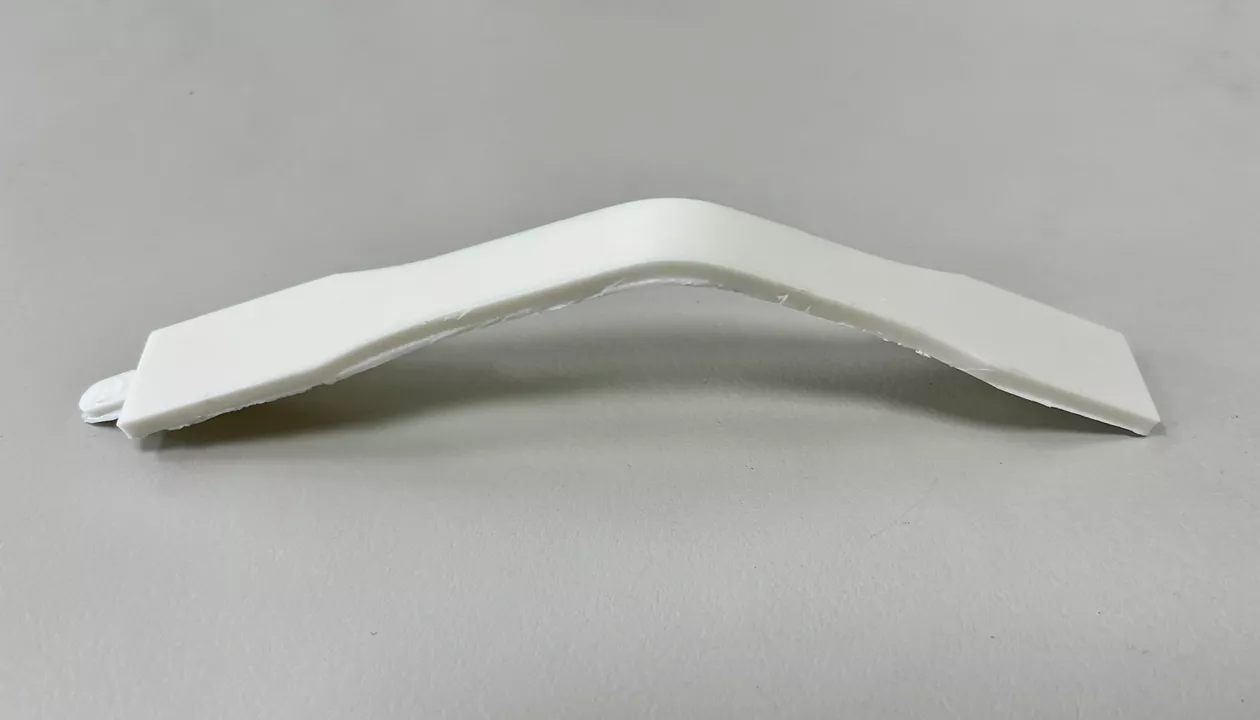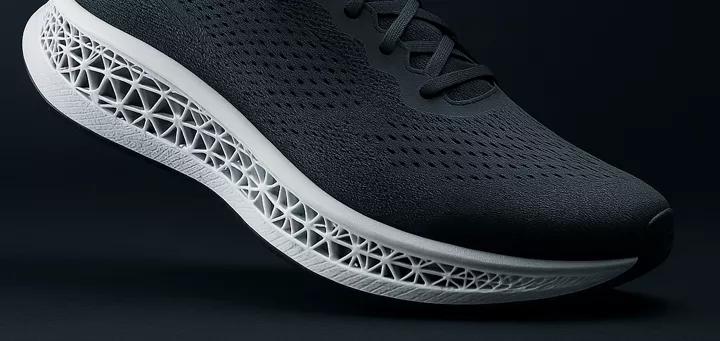When selecting a thermoplastic for industrial use, PA6, PA66, and PA12 are often confused due to their similar names. If PA6 and PA66 are like siblings, then PA12 could be considered their cousin—closely related, yet fundamentally different in structure and behavior.
While this article focuses on the differences between PA6 and PA12, it's important to note that PA6 vs PA66 is also a common comparison when selecting nylon materials for engineering applications. See our full comparison of PA6 vs PA66 to understand how these two nylons differ in mechanical strength, thermal performance, and moisture absorption.
Now, let's take a closer look at how PA6 and PA12 compare in structure, flexibility, and performance.
Although they share similarities—such as strong mechanical performance, chemical resistance, and durability—PA6 and PA12 have key differences in chemical structure, flexibility, moisture behavior, and thermal resistance that make them suitable for different industrial applications.

1. Chemical Structure: PA6 vs PA12
PA6
Derived from caprolactam (6 carbon atoms). Offers higher stiffness and strength, but absorbs more moisture.

PA12
Made from lauryl lactam or ω-aminododecanoic acid (12 carbon atoms). Results in lower density, enhanced flexibility, and significantly lower moisture absorption (~0.3%).

👉 This structural difference greatly influences their overall performance and application scope.
2. Mechanical Properties: Strength, Stiffness & Impact Resistance
Tensile Strength & Flexibility
- PA6: Higher tensile strength and rigidity — ideal for structural and load-bearing components.
- PA12: More flexible and softer — suitable for dynamic parts and systems under repetitive stress.

Impact Resistance
- PA6: Can become brittle at low temperatures.
- PA12: Maintains excellent impact resistance even in cold environments.

👉 Explore how impact modifiers can enhance nylon toughness and cold-weather durability.
3. Moisture Absorption: Dimensional Stability Matters
PA6
Absorbs ~3–4% moisture, which can lead to dimensional changes, warpage, and reduced strength.
PA12
Absorbs only ~0.3%, ensuring dimensional stability even in humid or wet environments.
👉 Moisture can seriously affect performance. See how we ensure Superior Strength and Dimensional Stability in nylon solutions.Moisture absorption can greatly affect the dimension and warpage of the final products.
4. Thermal Performance: Heat Resistance & Processing Temperatures
PA6
Melting point around 220–230°C. Better for high-heat applications like under-the-hood parts.
PA12
Melting point around 178–180°C. Offers excellent thermal aging resistance and consistent performance.
5. Summary Table: Key Differences Between PA6 and PA12
|
Properties |
PA6 |
PA12 |
| Chemical Structure | 6 carbon atoms | 12 carbon atoms |
| Strength | Higher stiffness | More flexible |
| Impact Resistance | Moderate | Excellent |
| Moisture Absorption | High (~3-4%) | Low (~0.3%) |
| Melting Point | ~220–230°C | ~178–180°C |
6. Cost Comparison: Affordability vs Performance
PA6
More cost-effective, widely available, and easier to process.
PA12
Higher material cost due to limited raw materials and specialized processing.
7. Typical Applications of PA6 and PA12
Common Applications for PA6
- Automotive structural parts (engine covers, gears)
- Industrial components (bearings, rollers)
- Electrical connectors
- Injection-molded parts requiring strength
- Functional 3D printing filaments

Common Applications for PA12
- Automotive fuel lines and brake tubing
- Pneumatic and hydraulic tubing
- Medical devices and flexible conduits
- Sporting goods (ski bindings, protective gear, shoe)
- Midsole support components in athletic shoes: PA12 has been used in 3D printing by companies like Nike.
- High-impact 3D printing parts

8. Modified Grades of PA6 and PA12
Both PA6 and PA12 can be compounded with additives to enhance mechanical, thermal, and chemical performance
-
Glass Fiber Reinforced PA6/PA12: Improves stiffness, reduces warpage
-
Flame-Retardant Grades: UL 94 V-0 compliant options
-
UV-Stabilized Grades: Suitable for outdoor applications
-
Heat-Stabilized Grades: Better resistance to long-term thermal degradation
-
Conductive & Antistatic Grades: Used in ESD-sensitive and fuel-handling systems
👉 Explore our Customization Solution and contact us to discuss your specific needs. We specialize in turning challenging material requirements into practical, high-performance solutions.
9. Case Study: PA6 vs PA12 in Automotive Applications
Background
An automotive manufacturer was facing issues with material selection for fuel line components and engine brackets. The company needed a solution that balanced mechanical strength, chemical resistance, and cost-effectiveness while ensuring longevity under extreme conditions.
Challenges
- The fuel lines needed excellent chemical resistance, low moisture absorption, and flexibility to prevent cracking over time.
- The engine brackets required high tensile strength, rigidity, and heat resistance to withstand engine vibrations and high temperatures.
- Cost was a concern, and the company wanted to optimize material usage.
Solution
- For fuel lines, the manufacturer chose PA12 due to its low moisture absorption (~0.3%), superior chemical resistance to fuels and oils, and excellent impact resistance. This ensured long-term durability in harsh environments without deformation or degradation.
- For engine brackets, PA6 reinforced with glass fiber (PA6 GF50) was selected due to its high tensile strength, thermal resistance, and affordability compared to PA12. This provided structural stability while keeping costs low.
Results
- The PA12 fuel lines performed exceptionally well, preventing cracks and leaks, significantly reducing maintenance and replacement costs.
- The PA6 GF50 engine brackets provided the required rigidity and heat resistance, improving engine performance without increasing production costs.
By using both PA6 and PA12 strategically, the company achieved optimal performance and cost savings.
Key Takeaways
- PA12 is ideal for automotive fuel systems due to low moisture absorption and chemical resistance.
- PA6 (especially PA6 GF50) is better for structural parts requiring high strength and heat resistance.
A combination of both materials can provide a cost-effective, high-performance solution.
👉 Learn the possibility of Replacing Metal with Different Kinds of Plastics.
10. Conclusion: Which Nylon Material Should You Choose?
What’s the Biggest Difference Between PA6 and PA12?
The most significant difference between PA6 and PA12 lies in their moisture absorption, flexibility, and mechanical properties.
-
Moisture Absorption
- PA6 absorbs more moisture (~3-4%), which can lead to dimensional instability over time, making it less ideal for applications exposed to high humidity or water.
- PA12 has a much lower moisture absorption rate (~0.3%), ensuring superior dimensional stability in humid or wet environments.
-
Flexibility vs. Strength
- PA6 is stronger and stiffer, making it suitable for high-load applications where rigidity is required.
- PA12 is more flexible and impact-resistant, making it ideal for applications where durability under stress is needed, such as tubing and fuel lines.
-
Cost Consideration
- PA6 is more affordable, widely used in industrial applications where cost-efficiency is important.
- PA12 is more expensive due to its enhanced performance, especially in applications requiring low moisture absorption and superior chemical resistance.
In summary, PA6 is ideal for high-strength, cost-effective applications, while PA12 excels in environments requiring flexibility, low moisture absorption, and chemical resistance.

Summary for Material Selection Between PA6 & PA12
Choosing between PA6 and PA12 depends on your specific application requirements:
- Choose PA6 if you need high strength, rigidity, and cost-effectiveness, and moisture absorption is not a major concern.
- Choose PA12 if you require low moisture absorption, flexibility, and excellent chemical resistance, even though it comes at a higher cost.
Ready to Choose the Right Nylon for Your Application?
Understanding the differences between PA6 and PA12 is key to selecting the right engineering plastic—whether you're developing automotive parts, fluid handling systems, 3D printing filaments, or industrial components.
At All Around Compounding (All Around Polymer Co., Ltd.), we don’t just supply materials—we deliver customized nylon compound solutions that meet your performance, processing, and cost needs.
👉 Get in touch with us today to discover how our customized PA6 and PA12 compounds can elevate your next project

